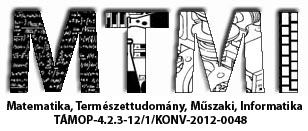Microembolic signal detection during different left atrial ablation techniques for atrial fibrillation. Relationship with postoperative cognitive function.
Abstract data
Background: Clinically silent cerebral ischemia(SCI) has been recently demonstrated on diffusion MRI after pulmonary vein isolation(PVI). Although their clinical relevance is unknown, they raise a new concern regarding safety of the procedure. Occurrence of SCI has been shown to correlate with the ablation technology used: phased radiofrequency (RF) ablation is associated with the highest, while cryoablation with the lowest incidence of SCI. We compared the occurrence of bubble formation seen on intracardiac echocardiography (ICE) and microembolic signals (MES) detected by transcranial Doppler(TCD) using these two ablation techniques and the effects of the procedures on cognitive function.
Methods: 26 procedures in 25 patients(age:51±13 years; female:male 5:20) undergoing PVI for paroxysmal or persistent AF were assigned to 3 different treatment groups: I:cryoballoon (CRYO) ablation and conventional intraprocedural anticoagulation(AC) regime with target ACT>250sec (7procedures); II:ablation using multipolar duty-cycled RF catheters (PVAC) with target ACT>250sec (12procedures); III:ablation with PVAC catheter using a more aggressive AC protocol with ACT>350sec (7procedures). Bubble formation was assessed on ICE and bilateral MES detection was performed using TCD capable to discriminate between solid and gaseous emboli. Neuropsychological tests were also performed in these patients and in six controls with AF but no intervention at baseline and 6 weeks postablation.
Results: Strong correlation was found between the degree of bubble formation on ICE and the MES-count in all groups. PVAC ablation is associated with significantly more MES even when a more aggressive AC is applied. Most of MES are gaseous in nature with both techniques. Clinical stroke/TIA did not occur in any patient. No significant changes in neuropsychological tests were found in the 3 ablation groups when compared to control patients(p=0,8).
Conclusions: Duty-cycled RF ablation is associated with significantly more MES even with a more aggressive anticoagulation. Most of MES are gaseous with both techniques. PVI has no short-term effect on cognitive function regardless the ablation technology used.
Támogatók: Támogatók: Az NTP-TDK-14-0007 számú, A Debreceni Egyetem ÁOK TDK tevékenység népszerűsítése helyi konferencia keretében, az NTP-TDK-14-0006 számú, A Debreceni Egyetem Népegészségügyi Karán folyó Tudományos Diákköri kutatások támogatása, NTP-HHTDK-15-0011-es A Debreceni Egyetem ÁOK TDK tevékenység népszerűsítése 2016. évi helyi konferencia keretében, valamint a NTP-HHTDK-15-0057-es számú, A Debreceni Egyetem Népegészségügyi Karán folyó Tudományos Diákköri kutatások támogatása című pályázatokhoz kapcsolódóan az Emberi Erőforrás Támogatáskezelő, az Emberi Erőforrások Minisztériuma, az Oktatáskutató és Fejlesztő Intézet és a Nemzeti Tehetség Program



